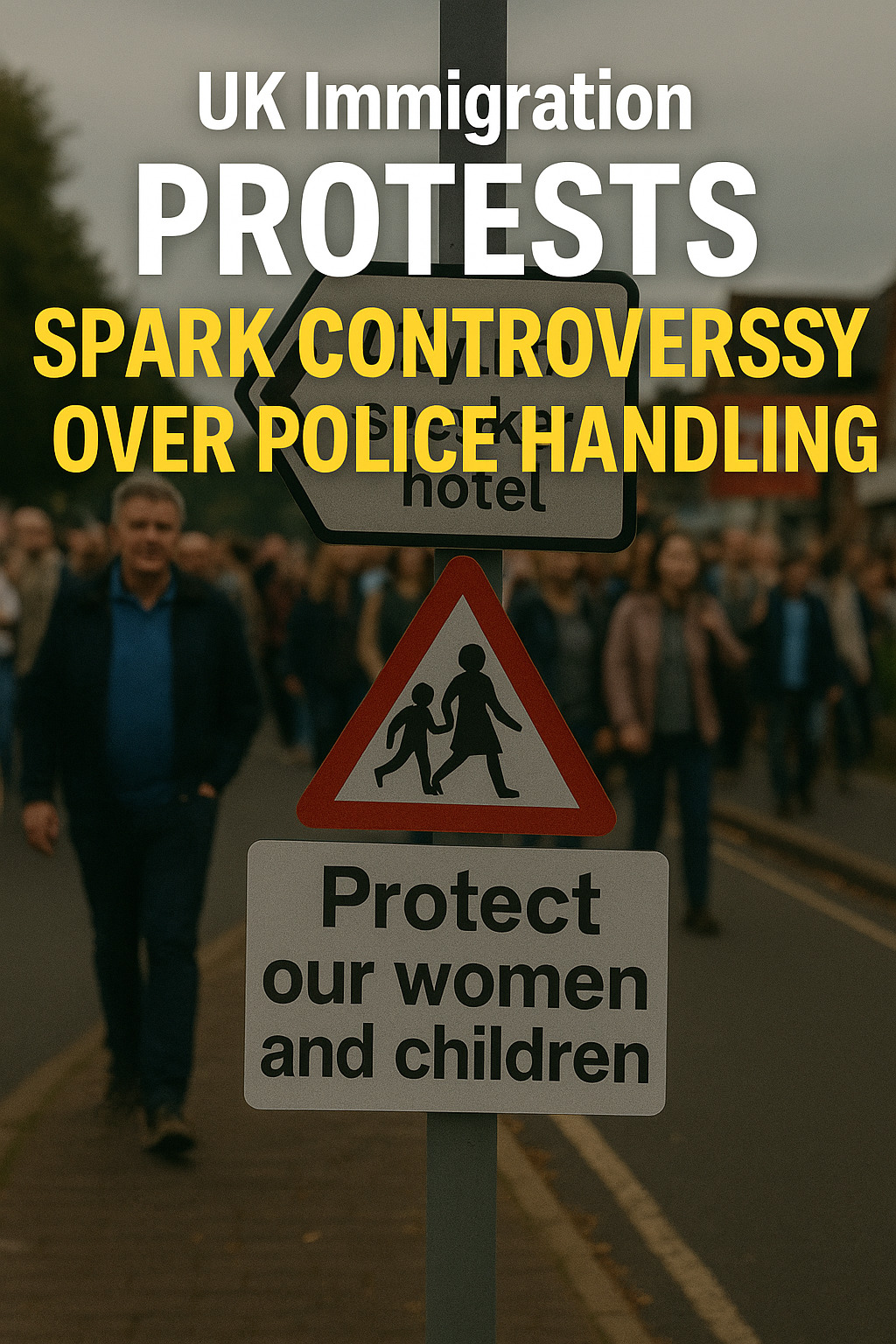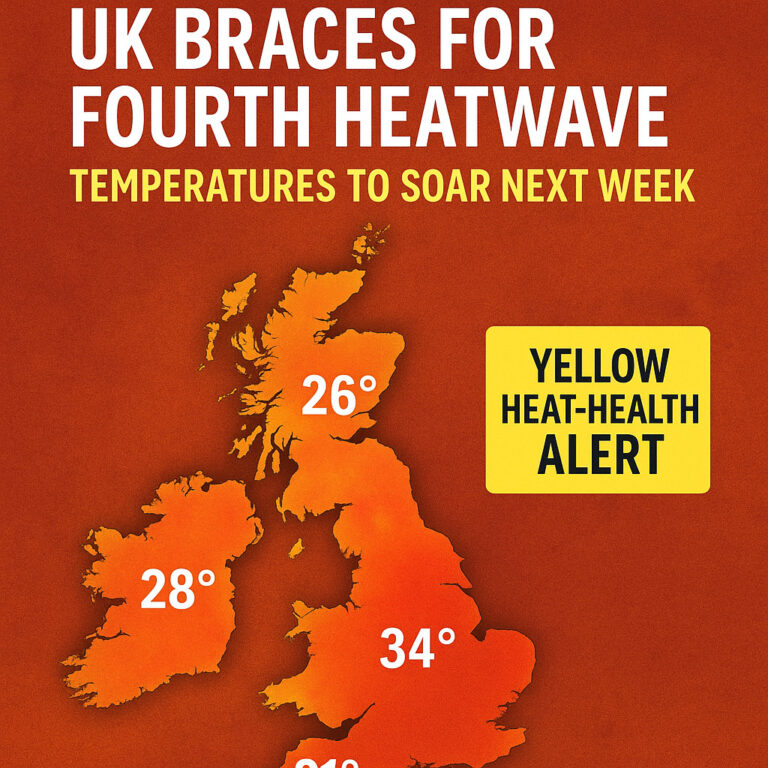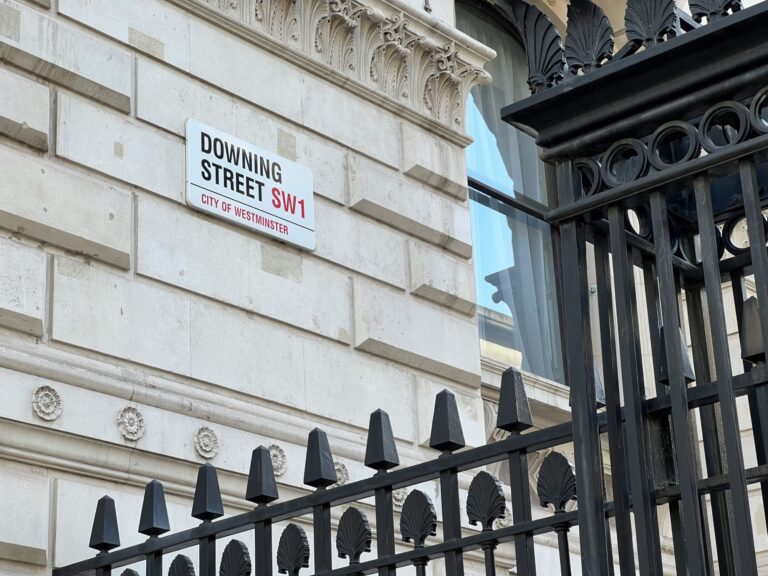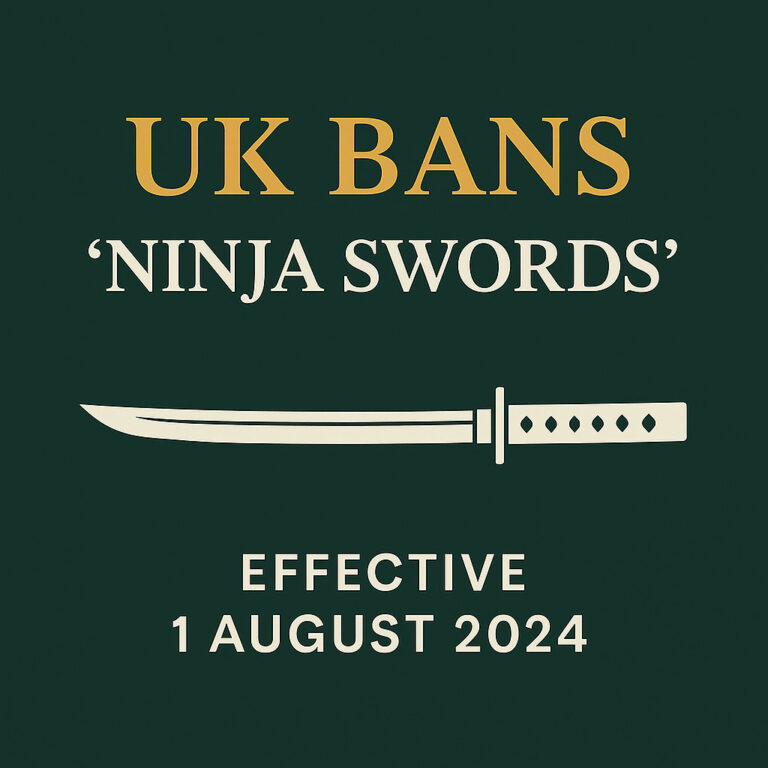UK “Protect Our Women and Children” Protests Surge Nationwide, Raising Concerns Over Policing and Counter-Protester Handling
6 August 2025 – England and Wales: Grassroots-led protests against migrant housing policies have escalated across the UK, as towns including Epping, Bournemouth, London, Diss, and Waterlooville witnessed demonstrations by residents rallying under banners reading “Protect Our Women and Children”.
Unlike recent pro-Palestine or Black Lives Matter protests, where police maintain physical separation between groups, these local-led demonstrations have seen anti-immigration protesters and counter-demonstrators standing face to face, often with minimal intervention from law enforcement. The lack of structured separation has raised safety and fairness concerns on both sides.
🚩 Protest Origins: Local Voices, Not Extremist Movements
Organisers and attendees assert these are not far-right gatherings, but instead localised, non-partisan expressions of frustration. Many protesters are mothers, community members, and ordinary residents citing safety, housing, and transparency as key concerns.
One woman at a demonstration in Hampshire told reporters: “We’re not extremists. We’re parents. And we’re scared for our kids.” A separate protester in pink held a sign reading: “You build hotels for them, while our daughters walk home in fear.”
Critics, including political figures and journalists, have labelled these protests “far right” due to involvement by groups such as Homeland and Patriotic Alternative, but in most towns, protests were community-led without formal party affiliation.
📍 Map of Protest Hotspots
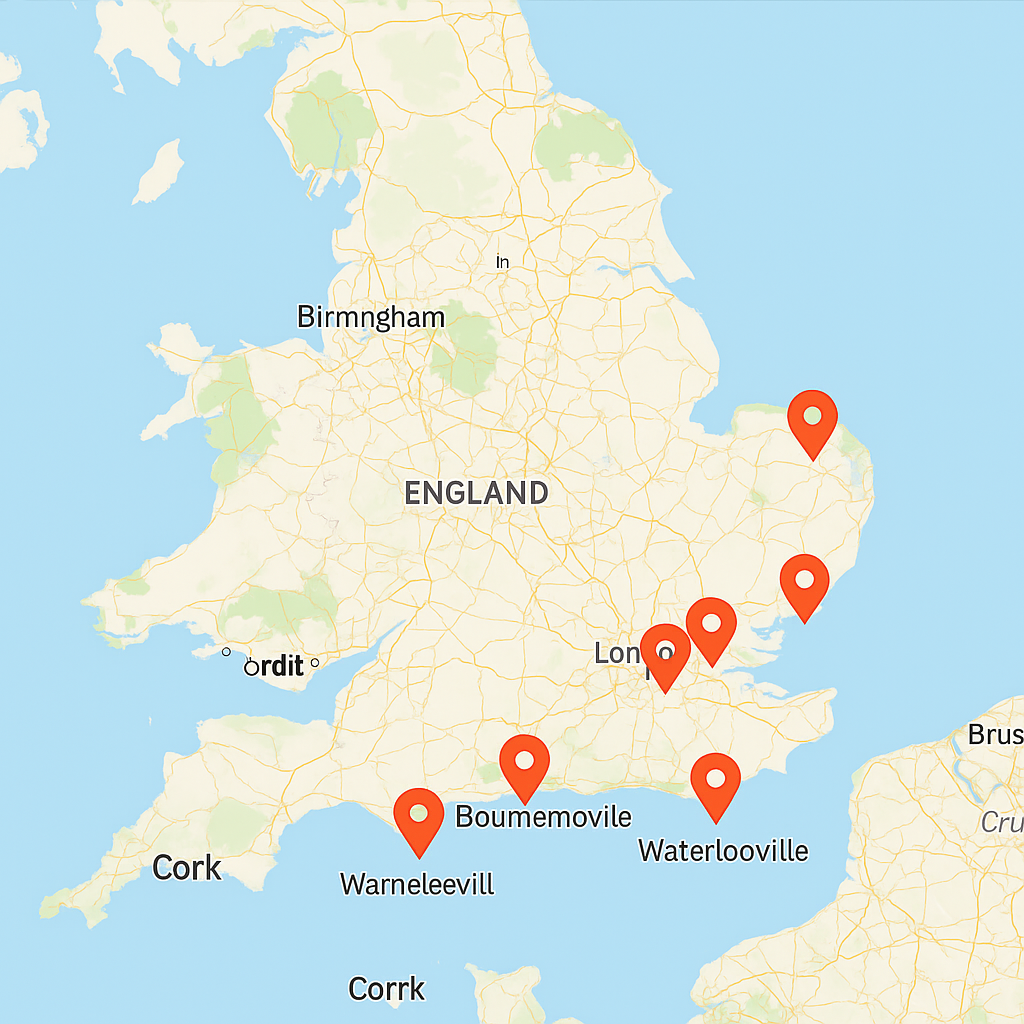
📱 Voices from Both Sides on X (Twitter)
From Protesters:
“Protect our kids – community safety first.”
“We’re not extremists. We’re safeguarding our families.”
From Counter-Protesters:
“Refugees Welcome Here. #StopHate”
“Don’t let agitators divide us — solidarity always.”
🚨 Police Tactics Questioned
In London, rival groups clashed outside the Thistle City Barbican Hotel. Protesters chanted “locals say no,” while asylum seekers inside were reportedly seen “blowing kisses” from hotel windows. Police stood in a thin line between the crowds, prompting criticism that they failed to adequately separate groups to avoid provocation.
In Bournemouth, mothers protesting at the Chine Hotel were confronted by masked black-clad agitators. Several confrontations broke out, and some attendees claimed police failed to protect the peaceful core of the demonstration.
📊 Comparison with Other Protest Handling
In events such as BLM and pro-Palestinian marches, UK police have consistently employed buffer zones, kettling, and pre-authorised barriers to prevent violent interaction between opposing groups. By contrast, many “Protect Our Kids” protests were policed passively with neither exclusion zones nor designated safe areas.
This discrepancy has led to accusations of double standards, particularly by protesters who feel their concerns are dismissed or deliberately inflamed by press labelling and tactical inaction.
🧠 Wider Implications and Public Opinion
- Public trust: Polls show growing mistrust in the government’s migrant housing strategy and a desire for more transparency in community placement decisions.
- Media framing: Protesters complain about being mischaracterised as “extremists” despite being long-time residents with no political affiliations.
- Policing fairness: Critics argue that inconsistency in protest policing, particularly around separation and de-escalation, undermines public safety and increases polarisation.
➡️ Conclusion
The ongoing wave of “Protect Our Women and Children” protests reflects a deeper unease across parts of Britain. While not coordinated by political parties or hate groups in most cases, the events are increasingly politicised by media, police strategy, and counter-protester narratives. Without clearer police guidance, the risk of confrontation between concerned residents and activist groups is likely to grow in coming weeks.
Fidelis News is free to read – but not free to make.
If you value independent reporting, you can support our work via Buy Me a Coffee.

